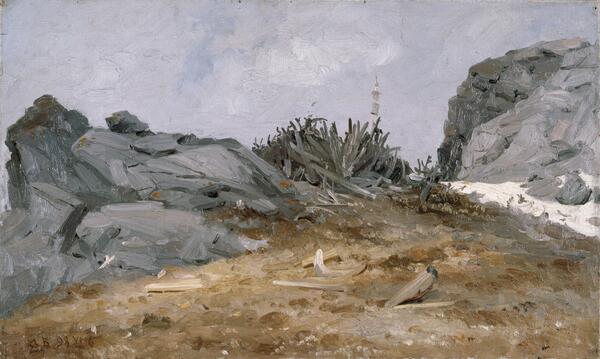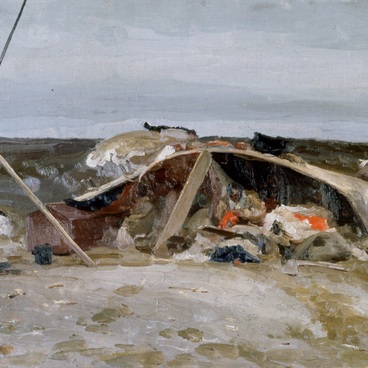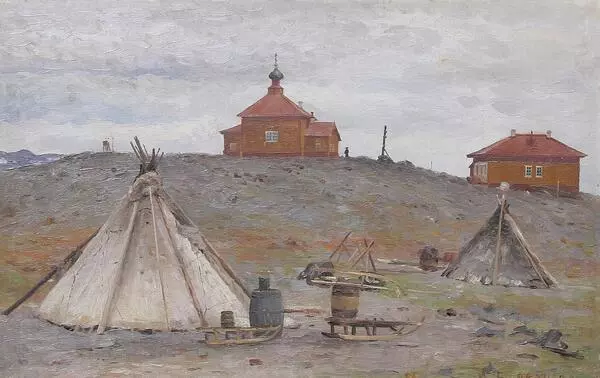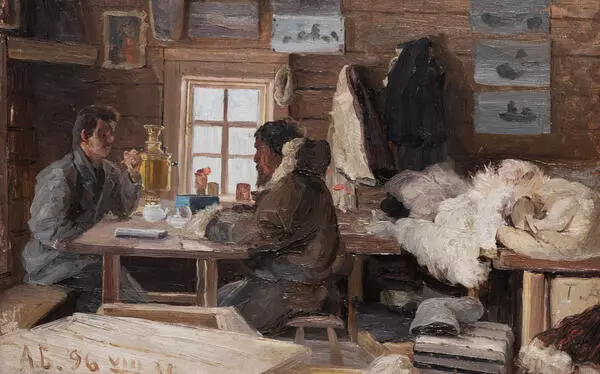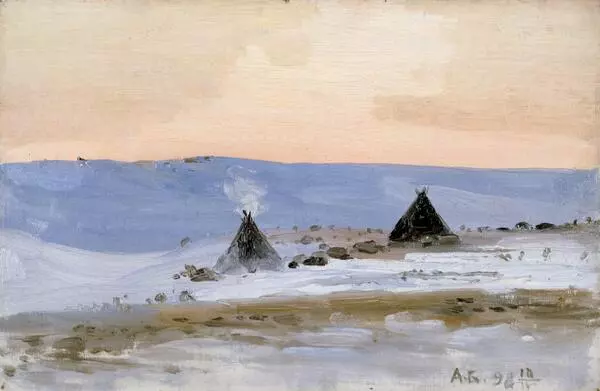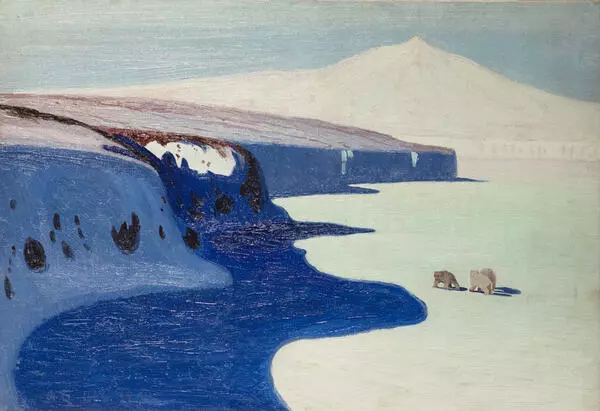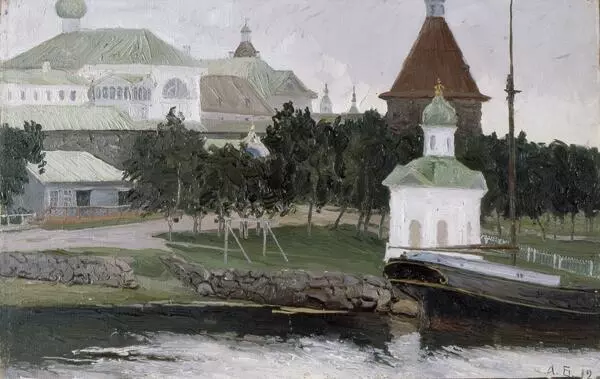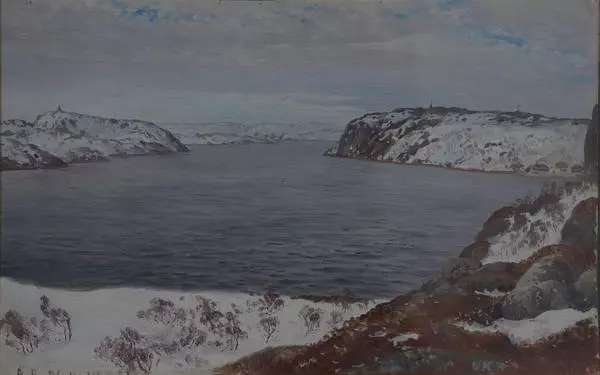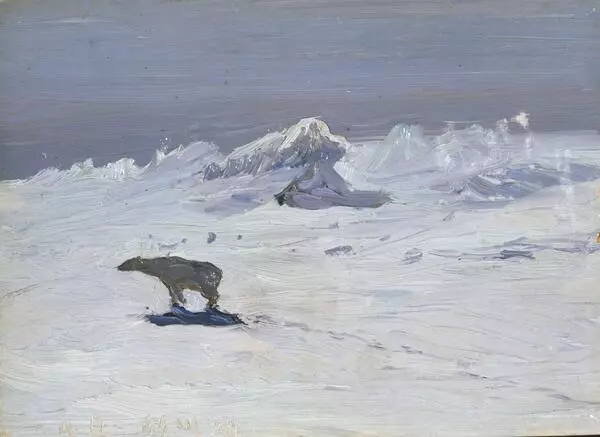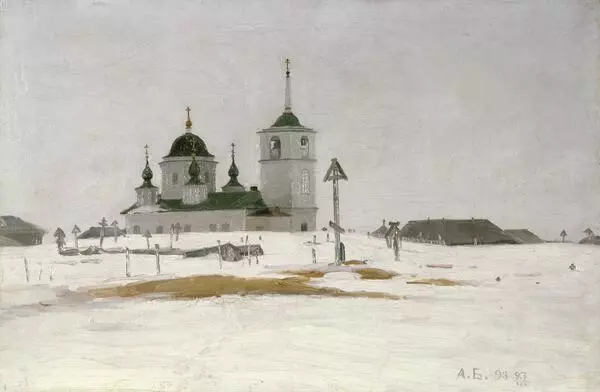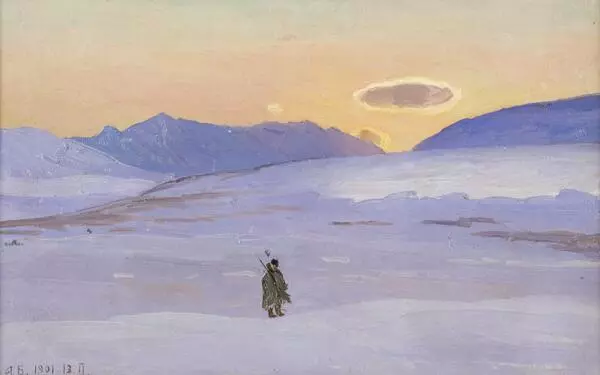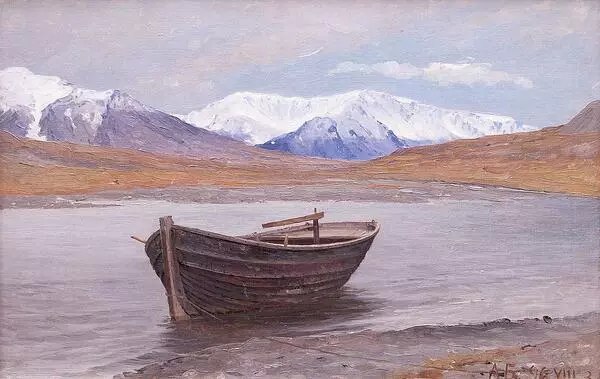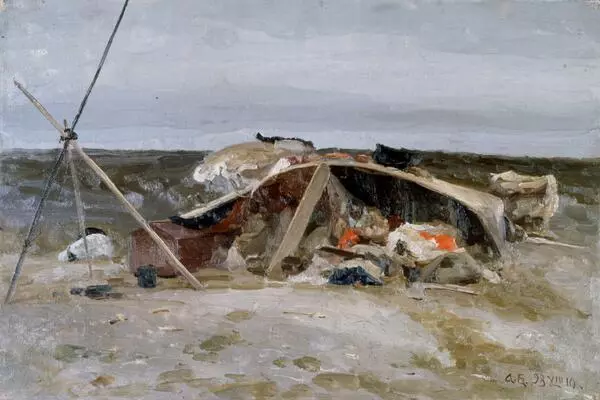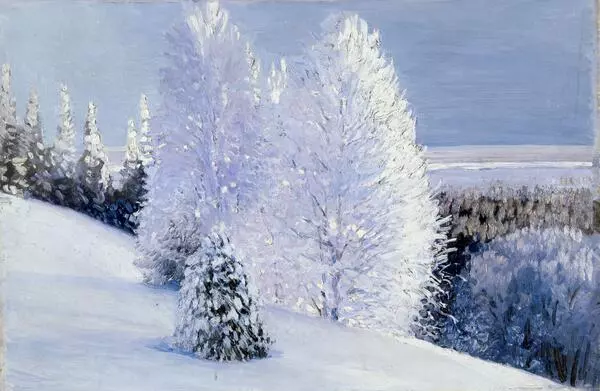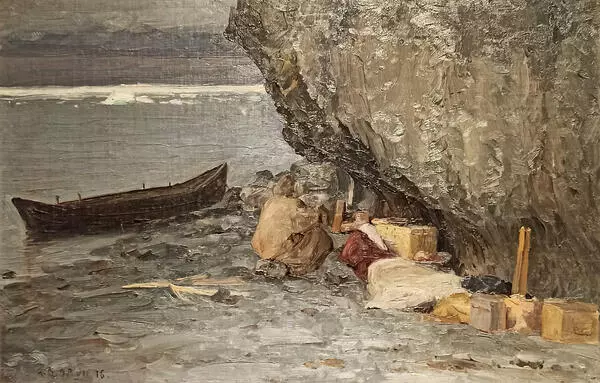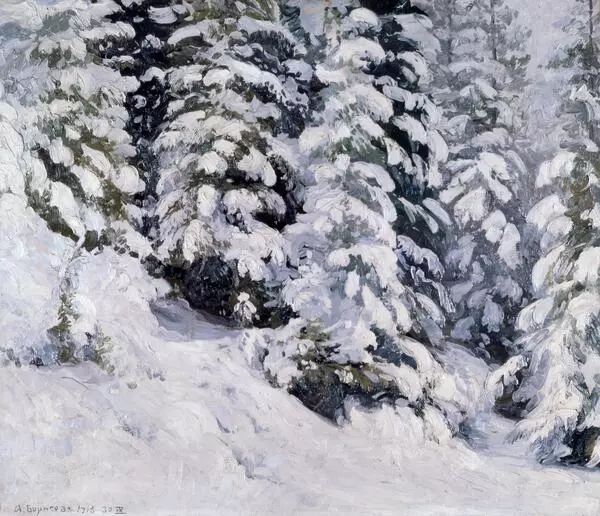Vaygach Island is appealing in many regards. For an artist, it is a picturesque white spot. For an anthropologist, it is an interesting sacred site that attracted Samoyed people from all over European and Siberian tundra, who came to the island to worship their idols. For a tradesman, it was a profitable place for a fur-trade. For a geologist, it is a terra incognita that can contribute a lot to the Earth’s crust studies.
While travelling across the island, Alexander Borisov took notes, apart from painting studies.
“About three miles from the main sanctuary, ” he wrote, “we stopped by the threshold of this, so to say, Samoyed Mecca. I rushed to examine this peculiar site and came over a large heap of idols situated between two rocks. It was so huge that, if we wanted to move it, we would have had to load about 30 or 40 carts. Around those deities, especially to the West, multiple polar bear skulls and reindeer skulls with antlers lay. A few paces away, piles of different objects were seen: axes, knives, chains, fragments of anchors — apparently, from shipwrecks — harpoons, pieces of guns and locks, bullets etc. Samoyeds travel thousands of kilometers to sacrifice a reindeer here, in front of the pedestal of the polar master”s abode, and to sprinkle the sanctuary with the animal”s blood. After I finished painting my studies, an opportunity to recollect some of the idols and offerings for a public museum came up. At first, my Samoyed guide tried hard to talk me out of touching those dreadful deities, because I was going to invoke their wrath.
“I don”t want my reindeer to die, ” he told me terrified. “Once an archimandrite decided to burn the idols, and he fell dead shortly after.”
“But I know it”s allowed to take some objects from here, ” I replied, “you just have to offer something in return, and so the spirit will not get angry. See, it”s not in the least humiliating for your deity. We Christians move our sacred objects, too. We bring our miraculous icons to Moscow, to the Dormition Cathedral.”
In this manner, after much persuasion and a promise to offer a heap of empty paint bottles, a broken glass and a silver ten kopeks coin, the Samoyed agreed to transport the idols with his reindeer, and so I loaded three sleds.’
While travelling across the island, Alexander Borisov took notes, apart from painting studies.
“About three miles from the main sanctuary, ” he wrote, “we stopped by the threshold of this, so to say, Samoyed Mecca. I rushed to examine this peculiar site and came over a large heap of idols situated between two rocks. It was so huge that, if we wanted to move it, we would have had to load about 30 or 40 carts. Around those deities, especially to the West, multiple polar bear skulls and reindeer skulls with antlers lay. A few paces away, piles of different objects were seen: axes, knives, chains, fragments of anchors — apparently, from shipwrecks — harpoons, pieces of guns and locks, bullets etc. Samoyeds travel thousands of kilometers to sacrifice a reindeer here, in front of the pedestal of the polar master”s abode, and to sprinkle the sanctuary with the animal”s blood. After I finished painting my studies, an opportunity to recollect some of the idols and offerings for a public museum came up. At first, my Samoyed guide tried hard to talk me out of touching those dreadful deities, because I was going to invoke their wrath.
“I don”t want my reindeer to die, ” he told me terrified. “Once an archimandrite decided to burn the idols, and he fell dead shortly after.”
“But I know it”s allowed to take some objects from here, ” I replied, “you just have to offer something in return, and so the spirit will not get angry. See, it”s not in the least humiliating for your deity. We Christians move our sacred objects, too. We bring our miraculous icons to Moscow, to the Dormition Cathedral.”
In this manner, after much persuasion and a promise to offer a heap of empty paint bottles, a broken glass and a silver ten kopeks coin, the Samoyed agreed to transport the idols with his reindeer, and so I loaded three sleds.’

